STUDENT ASSESSMENTS
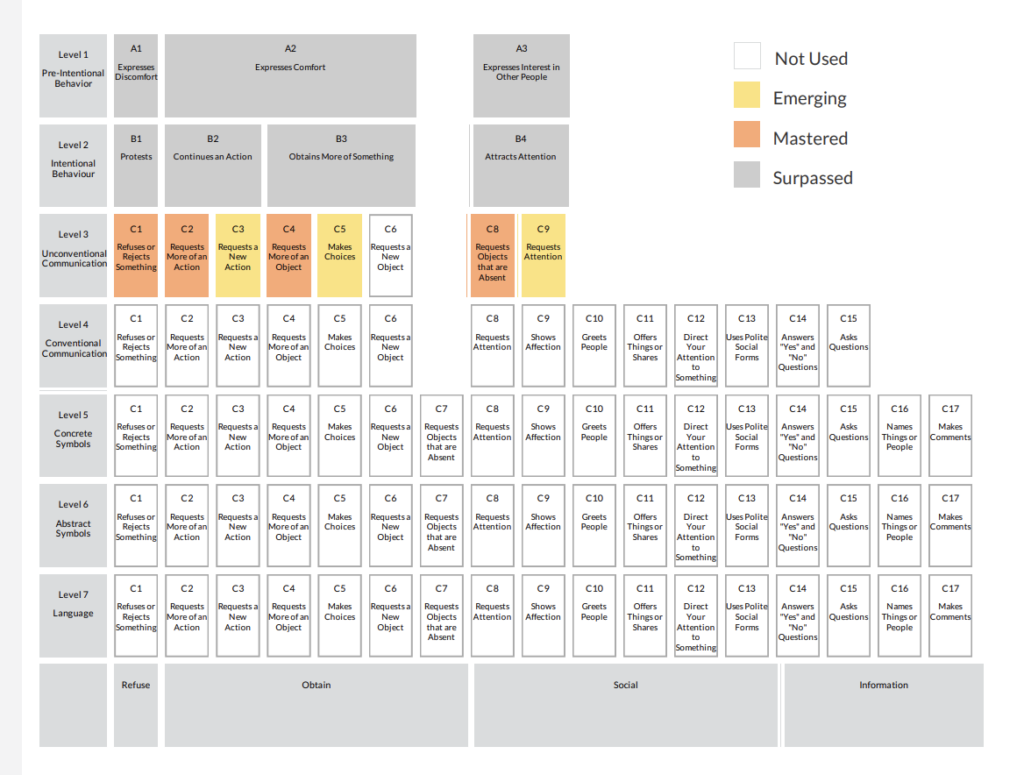
The Communication Matrix
Charity Rowland and DesignToLearn
The Communication Matrix is an assessment tool designed to pinpoint exactly how an individual is communicating and to provide a framework for determining logical communication goals. It was designed primarily for speech-language pathologists and educators to use to document the expressive communication skills of children who have severe or multiple disabilities who are at the earliest stages of communication. Its concise online format is designed for rapid administration by persons familiar with the assessment, and yields a visual profile of the student’s information.
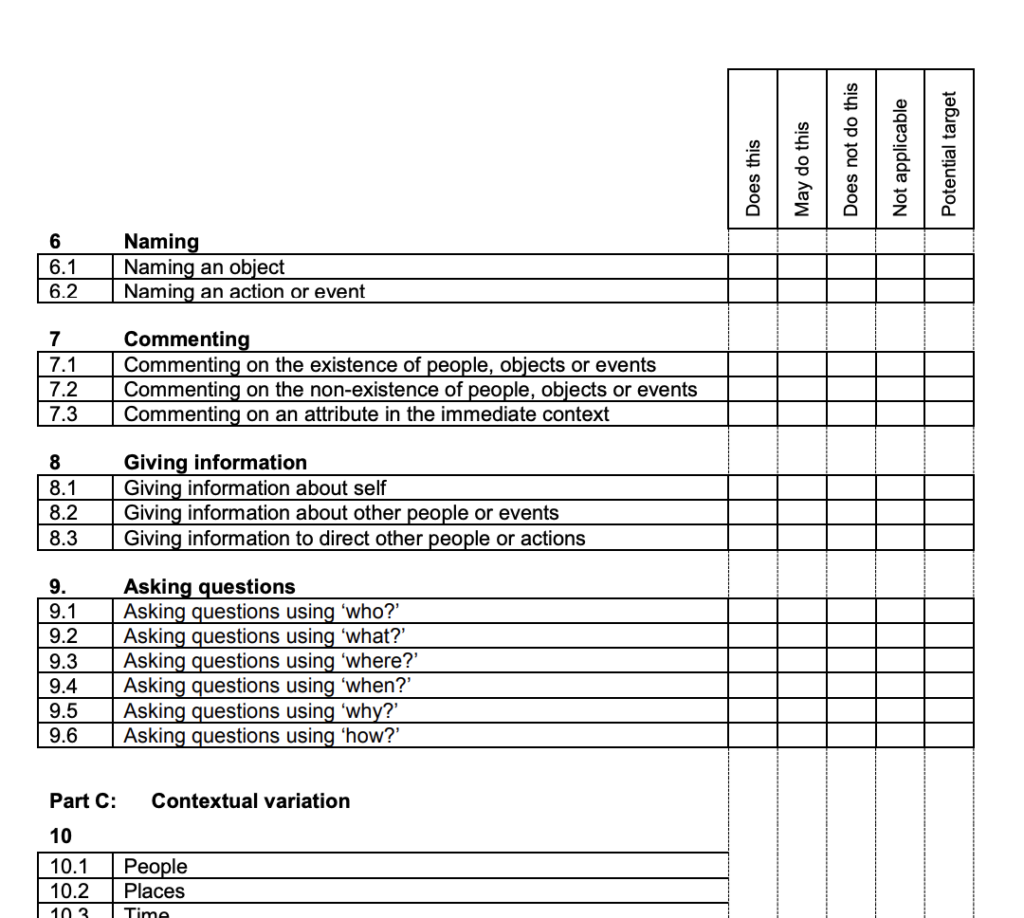
The Pragmatics Profile of Everyday Communication in Children/Adults
Dewart, H. and Summers, S.
- consists of informal interview with an open form of quesitoning
- focuses on communication in daily life facilitates working with families/caregivers; their insights and knowledge are valued, and they are encouraged to contribute to intervention and to monitoring progress
- provides a way of establishing a client’s own perceptions, placing value on people’s own insights into their experiences as communicators
- yields qualitative, descriptive data which can provide an added dimension to other quantitative assessments
- can help plan intervention that is relevant to everyday communicative need
.
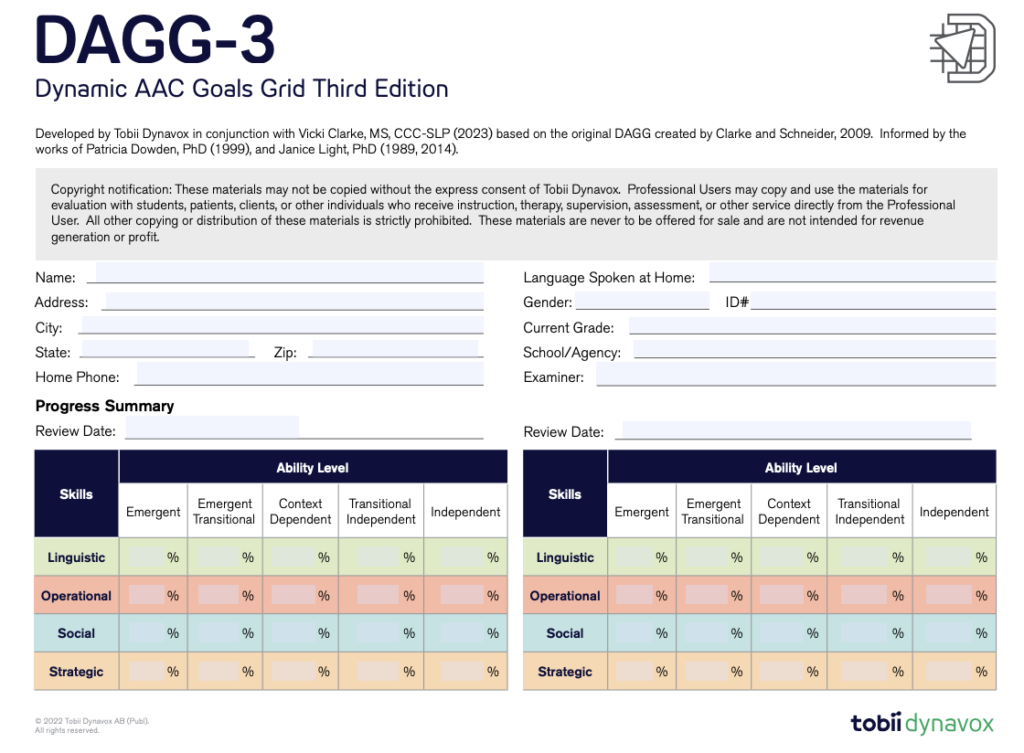
DAGG-3 Dynamic AAC Goals Grid (2023)
Tobii Dynavox with Vickie Clark
The DAGG-3 is the updated version of a goal and intervention guide distributed by the device vendor Tobii-Dynavox. The 21-page tool identifies sets of skills at five different levels of communication. The skills within each section represent the range of AAC abilities known as linguistic, operational, social, and strategic competencies. The student’s abilities are identified from within these sets and potential goals and intervention targets are selected with basic steps for monitoring progress included.
This tool can be helpful for thinking of the types of goals that are important to AAC users. The organized, color-coded sections make the complex process a little easier to navigate. The goals need to be individualized but getting some ideas on what to target can be really helpful for SLPs who do not have a lot of experience with writing those types of goals.
Tobii-Dynavox does require that you sign up to get access to their resources.
Device Assessment Tools
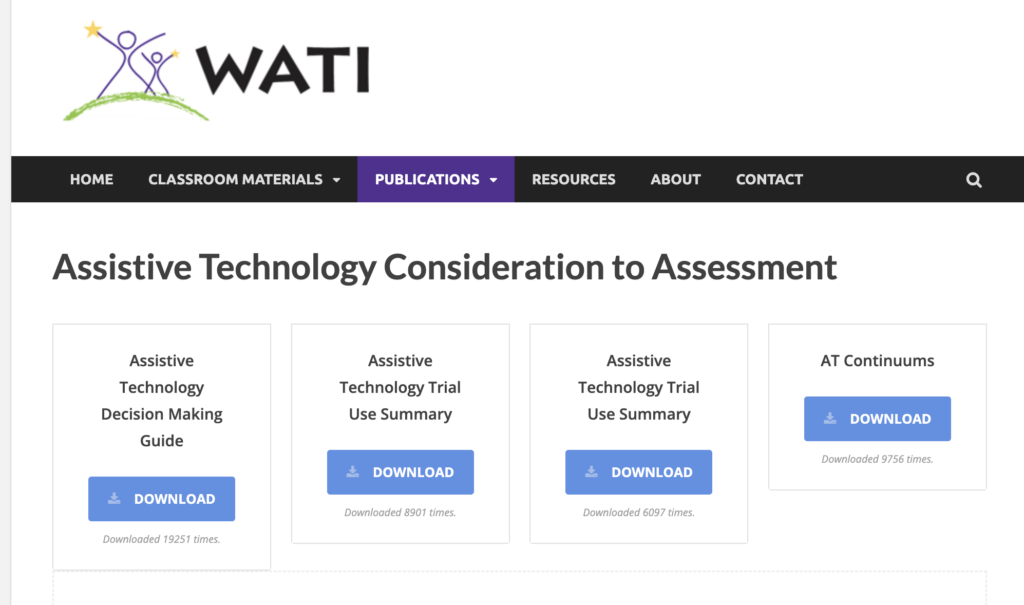
Assessing Students’ Needs for Assistive Technology
by Wisconsin Assistive Technology Initiative (WATI)
The WATI group has a long history of offering quality materials related to assistive technology (AT). The student assessment guide is divided up into chapters that include forms, checklists, and instructions. They provide a comprehensive look at the student across all areas that might be related to AT – sensory, motor, cognitive, communication, and more. The checklist format and details make it a nice tool for looking at the breadth of issues within and across a domain. The AAC section can be used as part of an AAC/AT evaluation.
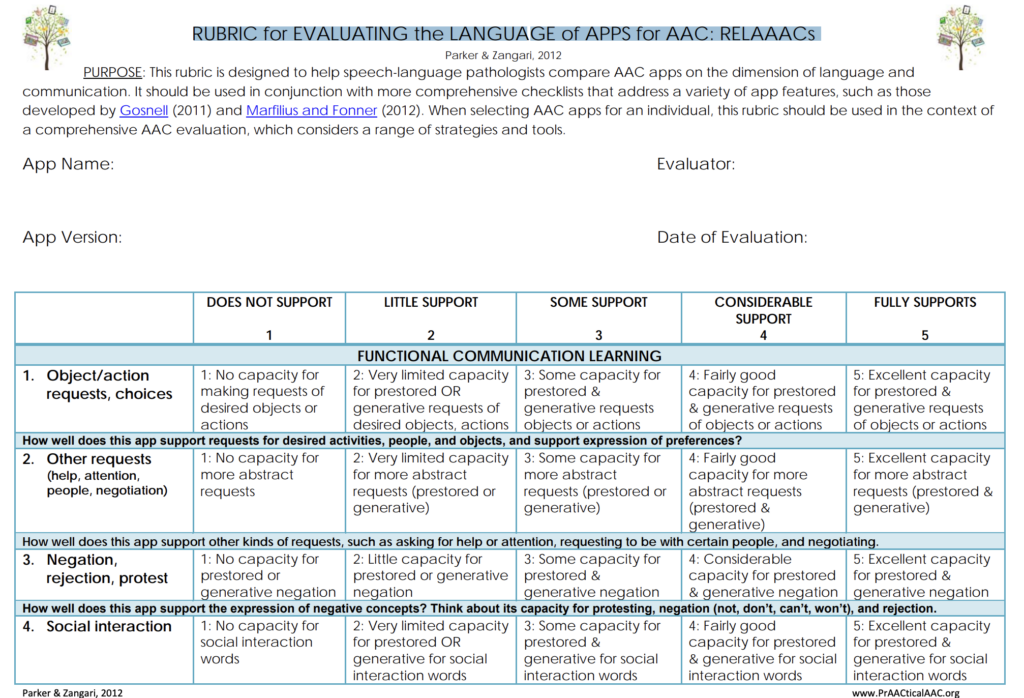
Rubric for Evaluating the Language of Apps for AAC: RELAAACs
by Carole Zangari
This rubric is a user-friendly reference for considering the features of AAC apps as part of a comprehensive evaluation. Fifteen different app features are listed, related to communicative functions and language learning characteristics. The app being considered is rated from 1 (does not support) to 5 (fully supports) for each feature. The levels have a short description along with the number value, making it easier to determine where a particular app would fall. Calculating the total score across all the features is one way to compare apps. Looking at the descriptions associated with the higher ratings is a good reminder what we would expect to see (and use) in a robust communication system.

AAC Finders Checkllist
by Assistiveware
text
Form

AAC Needs Assessment
by Tobii Dynavox

AAC Evaluation Summary
by Georgia Project for Assistive Technology

Rubric for Evaluating the Language of Apps for AAC: RELAAACs
by Robyn Parker and Carole Zangari

AAC Skills Assessment-R
by Vickie Clarke

Link AT’s Choosing A Communication Device: Considerations and Feature Matching

Feature Match Checklists
by Scott Marfilius & Kelly Fonner

UW Health AAC Feature Matching Overview
by University of Wisconsin Hospital and Clinics

WATI Assistive Technology Checklist
by Wisconsin AT Initiative